Samsung Galaxy S6 vs Sony Xperia Z3
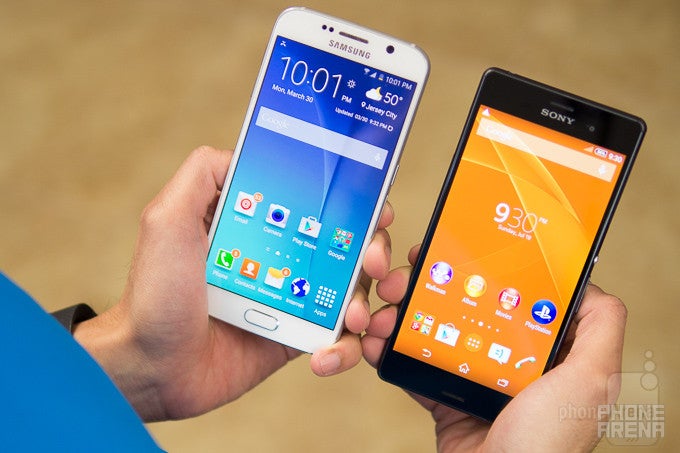
Introduction
Gaining even more steam just in time for its impending release stateside, the Samsung Galaxy S6 is no doubt going to be a major force to be reckoned with when it’s finally unleashed. Many prized smartphones stand in its way, but as we’ve seen thus far, it has the right guts, looks, specs, and performance to propel it to the top of the food chain.
Indeed, the Sony Xperia Z3 has been making the rounds for quite some time now, and through it all, we have to continue recognizing it for the qualities that make it a phone great. In the specs sheet, the older Xperia Z3 might have a disadvantage against the latest and greatest from Sammy’s camp, however, we just can’t count out the Xperia Z3 yet – more so when it bears some characteristics that are increasingly becoming less prominent amongst flagships.
Design
The S6 takes charge with its dramatically different design, one that’s now premium in nature, but the Xperia Z3 is one of the last remaining flagships to offer a water resistant construction.
With every new Galaxy S release, Samsung has historically built upon the base by refining what's already there and adding some extra on top. With the Galaxy S6, however, the electronics giant has focused far more on the latter than on the former. To that end, instead of the plasticky shell of the Galaxy S5, Samsung has adopted a metal frame that hugs the device all over and nestles within two sheets of Corning Gorilla Glass 4 – one placed in front of the display, and the other to protect the rear.
Samsung didn't stop there, instead opting to carve several 'nano layers' into the shell. The result is a front and back that reflect light in slightly different hues depending on your viewing angle. Also, we can’t forget about some of the handset’s key features – like its improved fingerprint sensor, built-in wireless charging, heart rate sensor, and IR blaster. In achieving a higher degree of craftsmanship and premium design, the Galaxy S6, however, is stripped of some key design features that were once notable qualities with its predecessor.
And with that, we have to look at the Sony Xperia Z3 longingly and admire the fact that it’s one of the few, remaining flagships to qualify being regarded as water-resistant with its design. That’s a testament to say the least, since it doesn’t make too many sacrifices with its aesthetics and construction – it’s relatively slim and premium. It shares some of the same design characteristics as its rival, such as its premium glass surfaces and metal frame, though the Z3 is the noticeably bigger phone of the two.Still, it’s able to accommodate a handy, and always useful microSD card slot and dedicated shutter key. Not surprisingly, the Galaxy S6 earns adulation and commendation for its stark redesign, one that’s undoubtedly now deemed as premium, but we can’t neglect to forget about the Xperia Z3’s design either. Come to think of it now, it’s one of the most underrated smartphone designs out there. Despite that, the Xperia Z3’s hard lines makes it a bit awkward to handle at times, which makes the Galaxy S6 feel a ton more comfortable to hold.
Display
Everything is just better with the Galaxy S6’s display.
Being almost a year newer has its advantages, especially knowing Samsung’s insatiable appetite for pushing the boundaries. Clearly within the flagship range, the Xperia Z3’s 5.2-inch 1080 x 1920 LCD display has several good qualities about it, but it looks daunting on paper in comparison to the Galaxy S6’s dazzling 5.1-inch 1440 x 2560 Super AMOLED display.
In all fairness, it’s quite difficult in deciphering the detail superiority of the Galaxy S6’s display over the Xperia Z3 when looking at the two from a normal distance – they’re both sharp and pleasing to the eye. Moving ever so closer, however, that’s when we begin to visualize the astounding level of detail produced by the quad-HD resolution of the Galaxy S6’s screen. For practical usage, though, there’s no denying that they’re both on equal ground.Now, let's talk about color calibration. With the Samsung Galaxy S6 set in the non-default Basic display mode, we're looking at a spot-on color temperature of 6550K (6500K being the desired optimal value), while the Xperia Z3 offers the very unsatisfactory 10324K. In real terms, this means that the Xperia Z3’s display is cold (or bluish) and that's especially visible with whites and various shades of gray. In comparison, Samsung's device offers realistic whites that are... well, white!
Were we to draw the line right here, the Xperia Z3 would only suffer a relatively small defeat, instead of being steamrolled as it is in reality. Indeed, the Galaxy S6's display also proves far better in terms of color accuracy, with essentially every shade hitting its desired target at every intensity level, while the Z3 falters significantly in comparison – the hue presentation is all over the place when referenced to the standard, as you can see in the color charts below. In reality, the S6’s panel replicates colors with accuracy, while the Z3’s screen tries to be more saturated and punchy, which, however, backfires significantly, resulting in a severely inaccurate screen.
Details and colors aside, the Z3’s LCD-based display shines strongly at 713 nits, making it especially easy to view outdoors with the sun present. Once known to be among the worse display technologies when it came to maximum brightness, Super AMOLED has taken a great leap forward in recent memory, as the S6’s Super AMOLED display musters up a respectable 563 nits.
Interface and Functionality
TouchWiz receives a new, more toned down redesign, but it’s still a power house experience in comparison to Sony’s Xperia UI.
While Samsung's Galaxy S devices have always shipped with nothing less than the best available at the time in terms of hardware, we've often found ourselves wishing it did more on the software side. Its proprietary TouchWiz layout has often proved sluggish and less responsive than what some competitors had to offer – a sight that the Samsung faithful only tolerated because of the smorgasbord of extra features the platform gave them access to. With the Galaxy S6, however, the company has finally come to sense, and has carried out a number of software optimizations that make the Galaxy S6's software both easier to understand and faster than ever before.
Although it hasn’t made the jump to Lollipop, which is rather unnerving because it’s been around for some time now, Sony's Xperia UI running on top of Android 4.4.4 KitKat is a bit closer to the stock feel than Samsung's TouchWiz, as it has way less extra functions. It adds some light multitasking tools like the Small Apps suite, which lets you hover up to five windowed apps, resize and move them around. What separates it from the Galaxy S6 is its tight PlayStation integration – where it can be set up for remote play, as in being able to stream most of your PlayStation 4 games directly to the Xperia Z3.
Visuals have never been a strong point for TouchWiz, but with this new version, however, Samsung has added support for third-party themes. Sure, it’s an appreciable thing to have, mainly because the themes help to mask TouchWiz’s otherwise bland visual presentation. On the software feature side, TouchWiz still adheres to the needs of power users because of its exhausted set of software features – they include the fingerprint scanner (still embedded in the physical Home button) that is now of the touch, not swipe, type, finally allowing for a hassle-free unlock. In addition, TouchWiz also offers software features like MultiWindow (run two apps simultaneously), and Private and Car modes (hide sensitive content / dashboard with bigger icons and essential apps only).
Processor and Memory
Being the newer product, the Galaxy S6 benefits from having more finesse and fluidity with its performance.
For the longest time, Samsung and Qualcomm worked together on the former's flagship lines, though the chip maker didn't always get all the orders – the rest went to Samsung's then fledgling semiconductor division making the Exynos chipsets. With the Galaxy S6, however, Samsung was ready for a monumental shift, and Qualcomm is no longer part of the game. Instead, the S6 relies on a home-grown Exynos 7420.
The 7420 is an octa-core processor, built on a 14nm node, with two clusters made up by four cores arranged in a big.LITTLE configuration and Mali-T760 graphics. We have one group of power-efficient ARM Cortex-A53 CPUs, and another with powerful Cortex-A57 ones. The idea behind the arrangement is simple to understand – the efficient team of cores takes care of most trivial tasks, while the speedy A57 cores kick in when power is required. If maximum performance is what you need, the Exynos 7420 can switch all eight cores on and work them simultaneously.
The newness of the Galaxy S6 allows it to benefit over the Xperia Z3, which is powered by a last-generation quad-core 2.5GHz Qualcomm Snapdragon 801 MSM8974-AC processor. In dissecting its performance, it seems to be great, both around the interface, and within apps, including 3D games. There isn't any occasional choppiness that would hinder the experience, but as we meticulously compare their responses, it’s just a smidgen behind the Galaxy S6’s exquisite fluidness. Don’t get wrong, most people would be satisfied by its responsiveness, but a higher level is achieved by Sammy’s pride and joy – plus, the benchmarks show the awesome muscle power of the Galaxy S6.
As for memory, we have 3 gigs of LPDDR4 RAM with the Galaxy S6, and a minimum of 32GB of internal storage. The Xperia Z3, on the other hand, is outfitted with half that capacity at only 16GB. That’s still plentiful enough for most people, but it can be supplemented thanks in part to its microSD card slot – something that has unexpectedly made a departure with the S6 this year. For some folks, the convenience of the microSD card slot is invaluable.
Internet and Connectivity
Smooth browsing is what we've been getting with each and every flagship for the past few years, and Samsung's and Sony's offerings don't fail to deliver just that. Courtesy of their powerful internals, both devices handle even asset-heavy pages with ease and don't struggle when navigating through them. That said, whereas both devices rely on Chrome for your browsing needs, Samsung's Galaxy S6 comes with its own default solution that is an equally great performer.
Honestly, the only thing separating the experience is just the incredible amount of detail produced by the Galaxy S6’s display. Certainly, we have no qualms or complaints about the amount of detail presented to us by the Xperia Z3’s display, but once you’ve seen the sheer enormity of what quad-HD resolution delivers, it’s hard to ever go back to visualizing webs sites in their entirety on a 1080p resolution screen.
On the connectivity front, you'll hardly find much to complain about, regardless of whether you go for the Galaxy S6 or the Xperia Z3. Both devices offer support for a wide array of LTE bands, 5GHz Wi-Fi, Bluetooth (4.0 for the Xperia Z3, 4.1 for the Galaxy S6), NFC, DLNA, and MHL. Still, the Galaxy S6 pulls ahead because of its infrared blaster for control over home electronics, and Samsung Pay – the company's new mobile payments solution that works hand-in-hand with the handset's NFC chip.
The idea behind it is much alike to that of Apple Pay – the company gets retailers and banks involved (but free of charge), and you reap the benefit of never having to pull out your credit card out of your wallet again (much less physically sign any receipts).
Camera
Both take incredible photos, but the S6 has the upper hand in low light conditions.
Sony's flagship sports a 20.7-megapixel 1/2.3” Exmor RS sensor, and Sony touts the new 25mm G Lens optics (f2.0), and other changes under the hood, such as boasting up to 12800 ISO sensitivity. Meanwhile, Samsung's Galaxy S line has always been synonymous with great camera quality, and the company wasn't about to drop the ball with the Galaxy S6. Instead of focusing on the software side of performance, Samsung has taken a two-pronged approach by making sure to deliver some exciting hardware updates, too. To that end, the Galaxy S6's 1/2.6”, 16-megapixel rear camera comes with a wider-than-before f/1.9 aperture lens and an optical stabilization gizmo attached to it.
The selfie snapper, too, has received a commendable update, and now offers 5-megapixels of resolution and an equally wide, f/1.9 aperture lens – whereas the Xperia Z3 is outfitted with a pretty ordinary 2-megapixel shooter. The handsets are adequately fast to shoot and record a snap, with Samsung's Phase Detection Autofocus System giving it an edge here, while the Xperia Z3 has a dedicated shutter button to the scale, so you can take a photo from a locked screen in a second or two.
Both phones produce high-quality photos, worthy of being converted to 4” x 6” printouts – and even larger layouts because of the amount of detail they capture. Combing through the results, ones captured outdoors where sunlight is plentiful, we’d give the Galaxy S6 the slight, minor advantage in overall quality. In particular, its warmer color reproduction makes our snapshots livelier in tone, whereas with the Xperia Z3, it exhibits a profound cooler tone; bluish in tone and sometimes washed out too. The cooler production is more prominent indoors under artificial lighting – florescent to be exact.
Even though the qualities rival one another when lighting is abundant for the most part, it’s the Galaxy S6 that shows its worth more under lower lighting conditions. For starters, its f/1.9 aperture lens proves most useful in capturing more light – so not only do photos comes out marginally brighter, but it’s still able to maintain a decent amount of sharpness and detail in the process. Oppositely, the Xperia Z3 takes some reasonable images, but there’s a little more noise with its composition. Going with their respective flashes, the Z3’s flash is a tad bit more powerful, garnering warmer toned colors for more vibrancy – while the S6’s is more on the neutral side.
Both handsets can record 4K video at 30fps, as well as 1080p footage. The videos come out detailed enough, with good color presentation, and no skipped frames. Sony's digital image stabilization, called SteadyShot, performs almost as well as a mechanical OIS system, but the checkered flag still goes to the Galaxy S6 when it comes to overall performance. In addition to the sharp looks, focusing it smoother and audio recording has a more robust tone with it – whereas with the Z3, its sharper toned.
Multimedia
We have no complaints about the multimedia prowess of both phones.
Both galleries offer grid thumbnail views, and allow for rich picture editing from within the apps, as well as sport plenty of sharing options. Best of all, there are enough fun editing tools at their disposal to further enhance the look of photos. Video playback is excellent on both handset, too, as they support quite a handful of video codecs out of the box. Watching videos isn’t an issue with either of them, thanks in part to their sharp displays, but we have an extra layer of multi-tasking with the S6’s experience – videos can essentially be played in their own windows, which can be placed on top of whatever we’re doing.
When it comes to the music players, we'd have to give one up for the Xperia phone, as it has a much sleeker and more comfortable interface. Both Z3's Walkman player, and Samsung's TouchWiz one have plenty of equalizer and visualization options built in, but the graphical environment on the Sony looks much more stylish than the reserved Samsung UI.
The Xperia Z3 also flaunts Sony's Digital sound Enhancement Engine (DSEE), which brags to upconvert crappy tracks to a higher-resolution format – we can attest that there is a slight difference, though not as stark as if the tunes were high quality in the first place. Sony offers two waterproof stereo speakers at the front, which sound clean, but are somewhat muffled, while the Galaxy S6 only offers one speaker along the bottom edge, which is strong enough, but with a thinner and subdued quality.
Call Quality
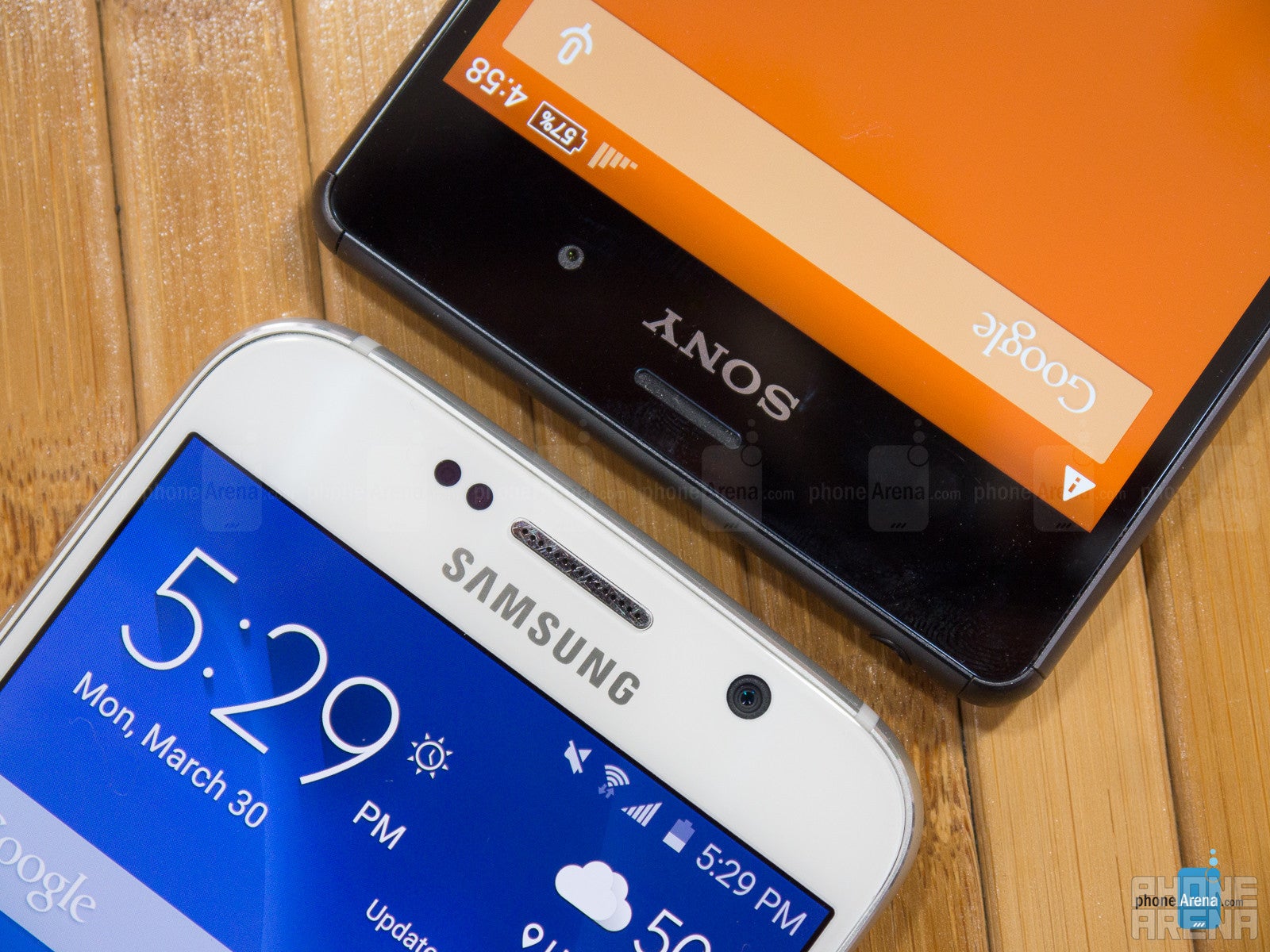
Battery
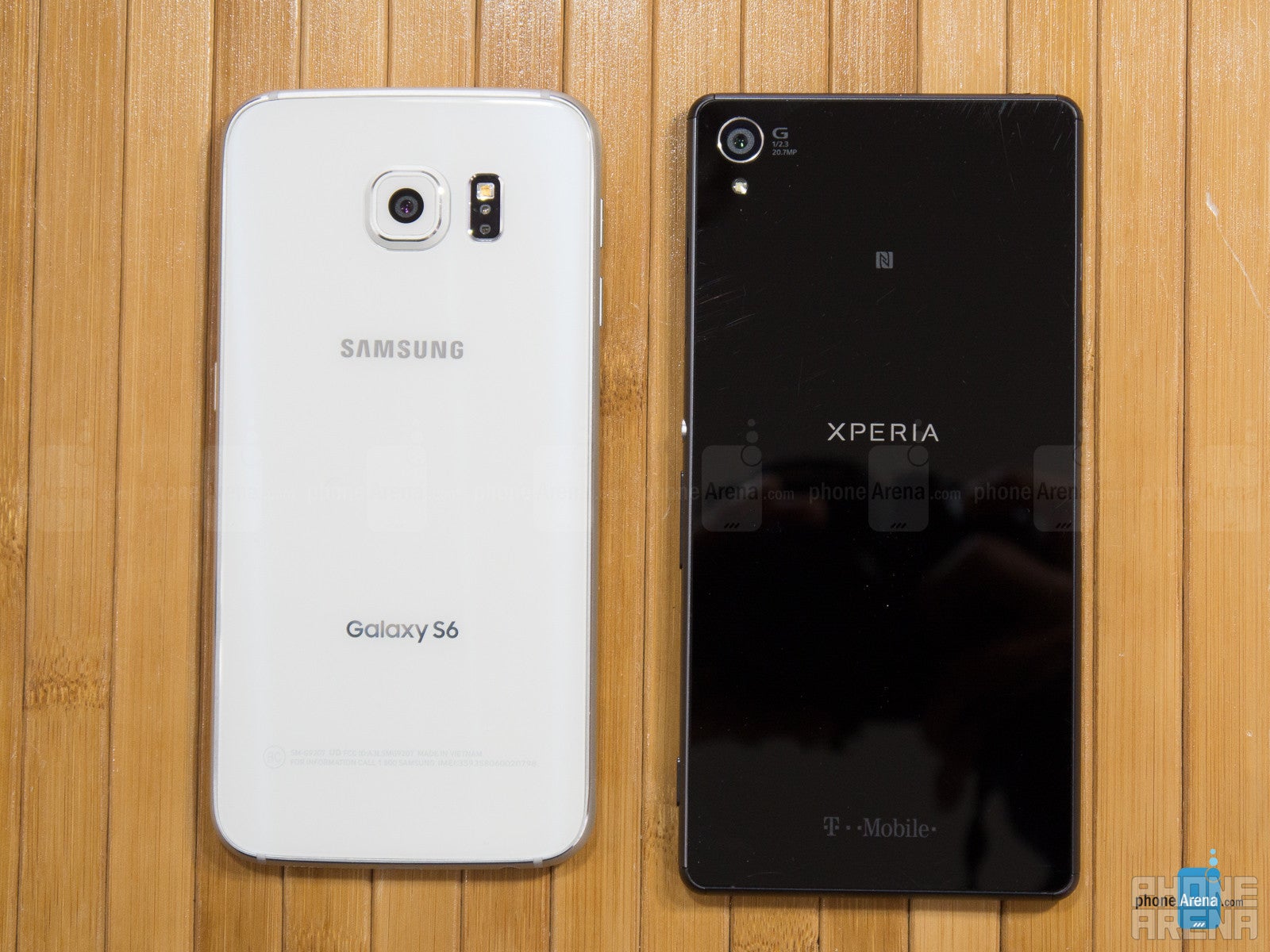
Even though the Xperia Z3 has the endurance, it requires an exorbitant 235 minutes to fully charge its battery. Time isn’t always on our side, so it’s quite refreshing to know that the S6’s rapid charging system gets it juiced in no time at all – an impressive 78 minutes to be exact! Additionally, if charging via the usual microUSB cable isn’t your thing, the S6 also has the convenience of being charged wirelessly.
Conclusion
There’s nothing wrong with the Sony Xperia Z3... except for the weird screen calibration, that is. When we think about what it takes to be slapped with the flagship status, it does carry almost all the qualities that come with the territory. It’s beautifully designed, armed with some lovely hardware, highly responsive, and even takes some dreamy photos and videos. Oh yeah, it also has a slight edge in the video gaming department because of its streaming PlayStation service.
All the might and impressive things with the Sony Xperia Z3 are to be commended, however, when it’s pitted against the Samsung Galaxy S6, it’s just eclipsed by something more grandiose. And that, folks, is what makes Samsung’s flagship the phone to beat in the space at the moment. Not only is it oozing with highly prized specs and hardware, but this flagship line has undergone a tremendous transformation with its design – one that we can safely proclaim to be one of the best out there. Best of all, it’s able to go beyond its rival in several key areas to make it the more impressive handset.
Pricing, though, favors the Xperia Z3 now that it’s been making the rounds far longer than its competition. With that, it’s possible to snag a phenomenal deal with the Xperia Z3, which naturally will appeal to those on a tighter budget. Now, if money is of no concern to you, the money you’ll fork over in buying the Galaxy S6 will be justified. The higher cost is warranted! Trust us, you won’t be disappointed in the decision.

Samsung Galaxy S6
Pros
- Incredible specs sheet
- Lighter, thinner, more compact
- Excellent camera
- Plenty of detail with its display
- Rapid & wireless charging
- Deeper set of software features
Sony Xperia Z3
Pros
- Water resistant design
- Expandable storage via microSD slot
- Longer battery life
- Tight integration with PlayStation
- Solid construction
Follow us on Google News
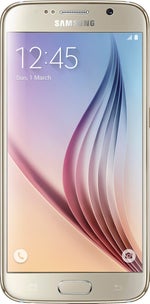
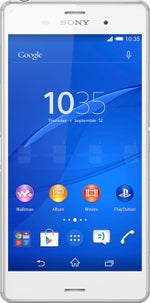








![T-Mobile will be giving out something that every smartphone user needs for free [UPDATED]](https://m-cdn.phonearena.com/images/article/174494-wide-two_350/T-Mobile-will-be-giving-out-something-that-every-smartphone-user-needs-for-free-UPDATED.webp)
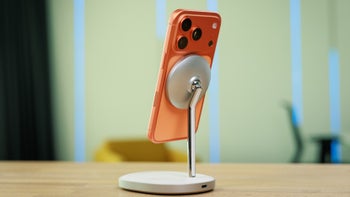
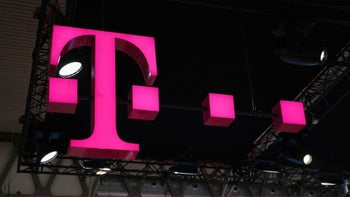
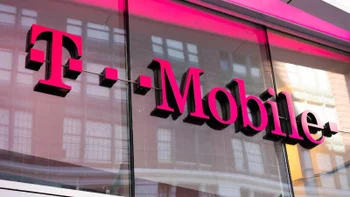
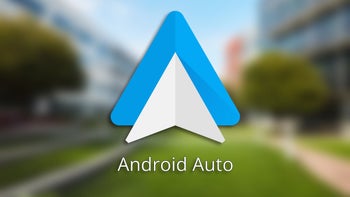


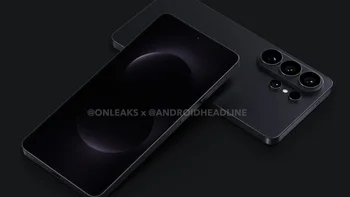

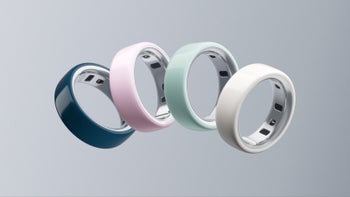
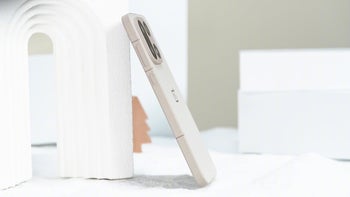
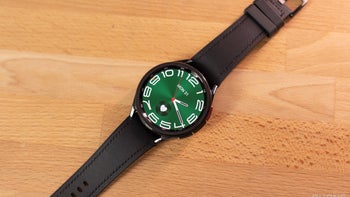
Things that are NOT allowed:
To help keep our community safe and free from spam, we apply temporary limits to newly created accounts: